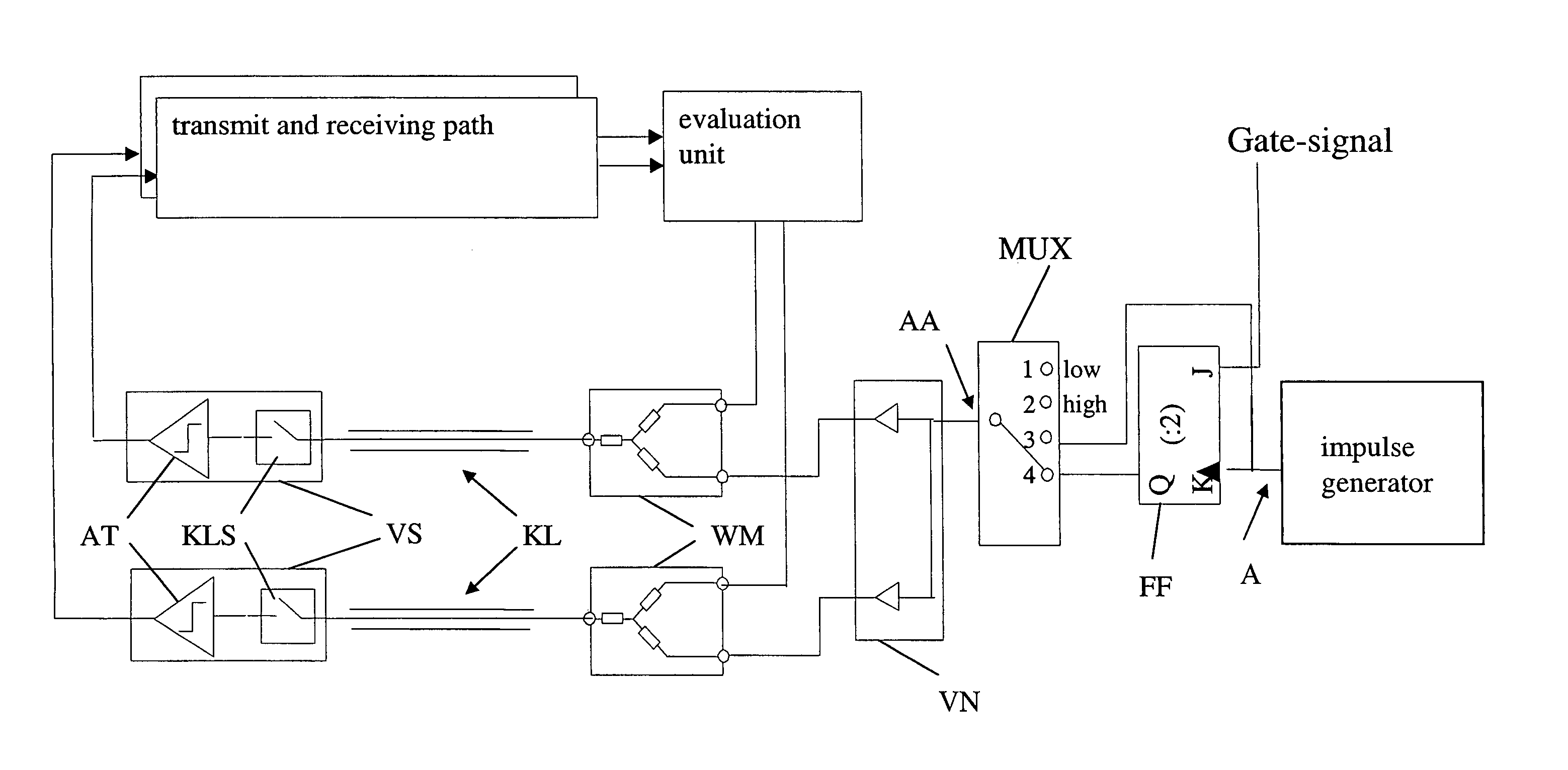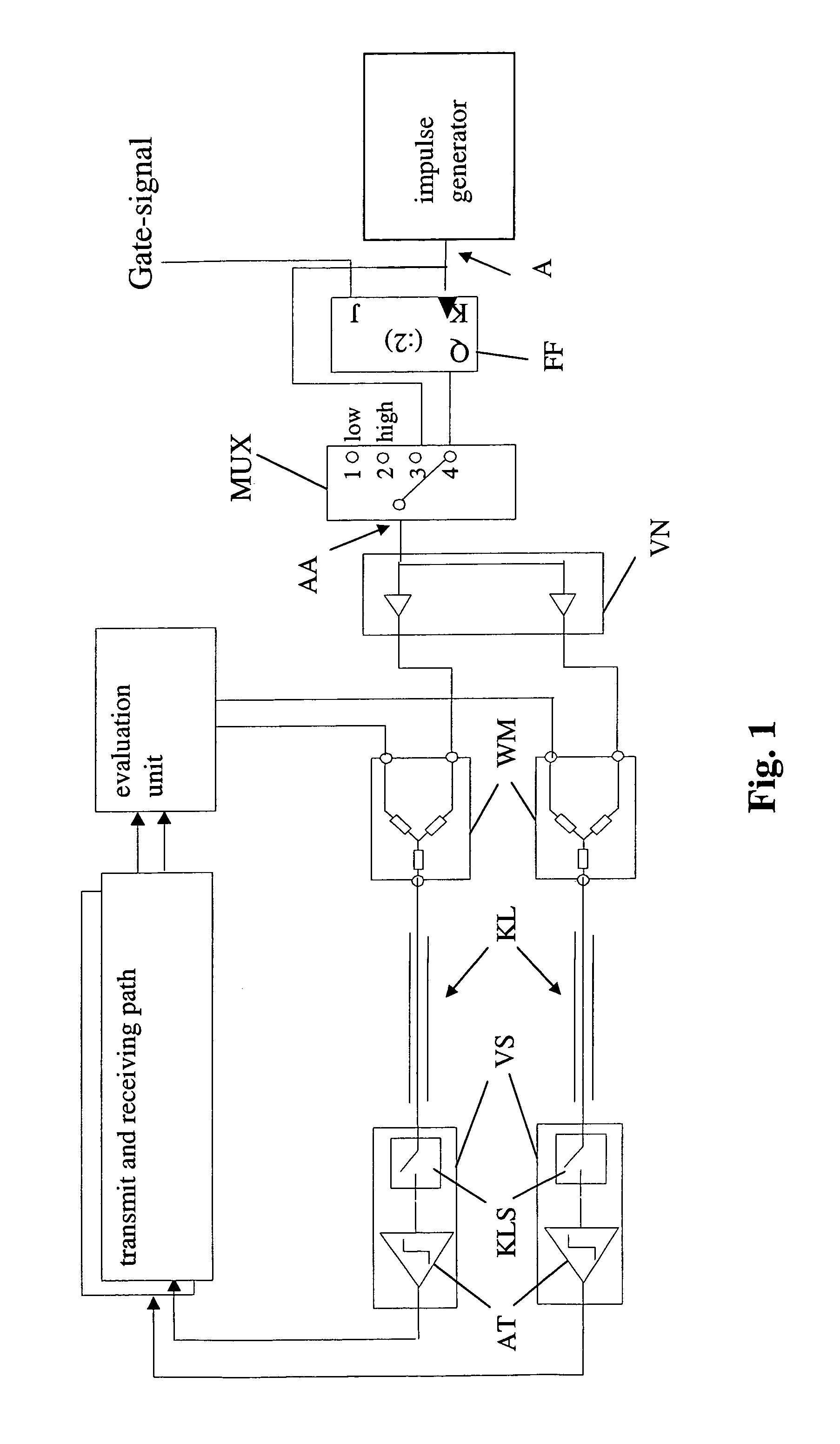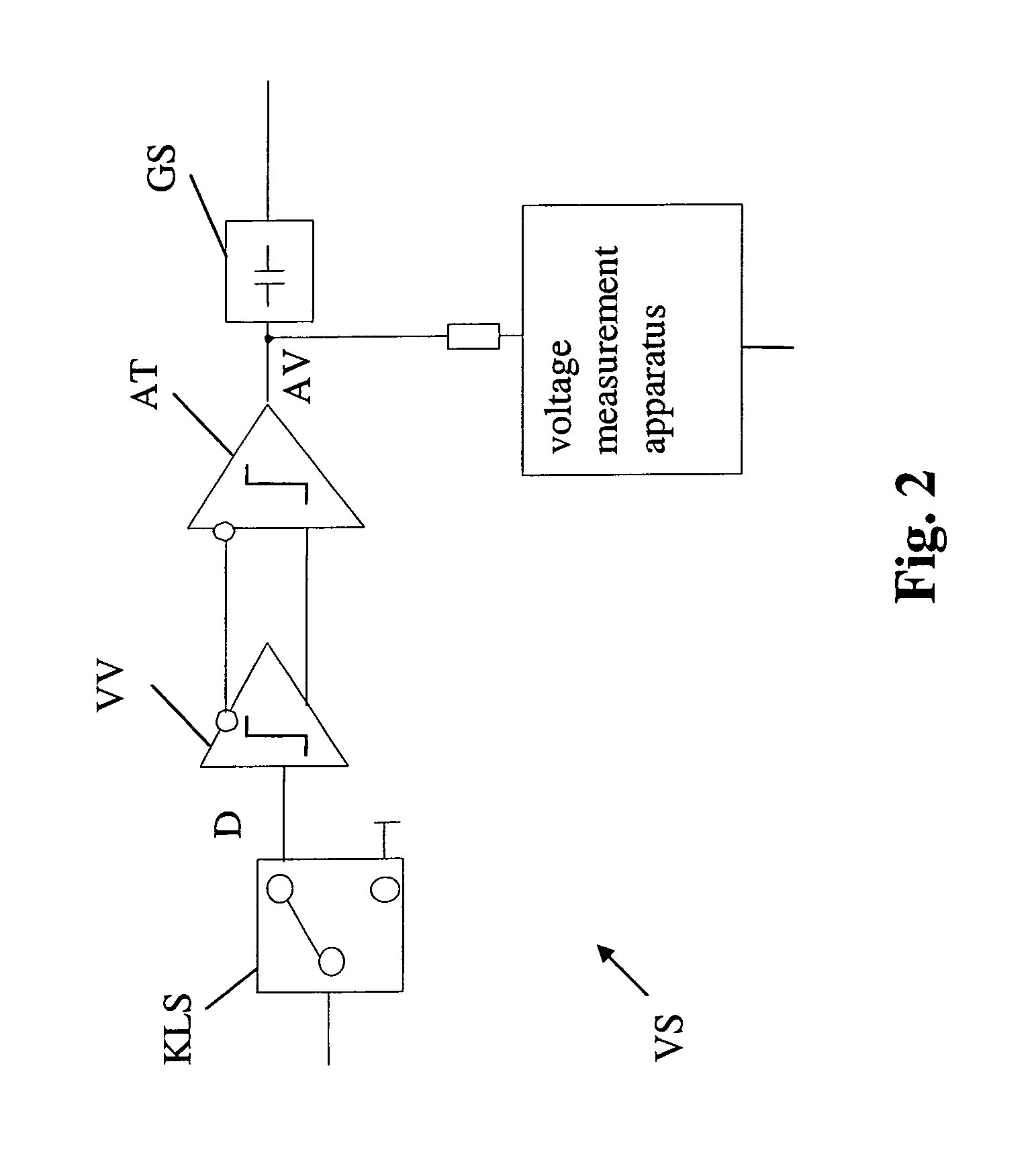Method for generating calibration signals for calibrating spatially remote signal branches of antenna systems
a technology of spatially remote signal branches and antenna systems, applied in the direction of instruments, measurement devices, radio wave reradiation/reflection, etc., can solve the problems of large space required for measuring devices, dispersion behavior of distribution lines, and difficulty in calibration
- Summary
- Abstract
- Description
- Claims
- Application Information
AI Technical Summary
Benefits of technology
Problems solved by technology
Method used
Image
Examples
Embodiment Construction
[0046]The exemplary circuit arrangement of a calibration circuit for implementing the method of the invention illustrated in FIG. 1 includes a timer TG that generates a base signal with a specifiable reference timer pulse by means of an integral so-called clock divider. The output A of the timer TG is connected to the input K of a J / K flip-flop FF. The J / K flip-flop is a so-called controlled 2 / 1 frequency divider. Consequently it is possible with the flip-flop that is used to generate precisely equal pulses without having to undertake further adjusting operations on the generated pulses. Hence, it is guaranteed that all pulses are of equal length. Instead of a J / K flip-flop FF, however, a so-called delay line and a Schmitt trigger gate can also be used. A control signal (gate signal) is positioned at the other input J of the J / K flip-flop FF.
[0047]The output Q of the J / K flip-flop FF is connected to an input 4 of a multiple alternation switch MUX that is connected downstream in seri...
PUM
 Login to View More
Login to View More Abstract
Description
Claims
Application Information
 Login to View More
Login to View More - R&D
- Intellectual Property
- Life Sciences
- Materials
- Tech Scout
- Unparalleled Data Quality
- Higher Quality Content
- 60% Fewer Hallucinations
Browse by: Latest US Patents, China's latest patents, Technical Efficacy Thesaurus, Application Domain, Technology Topic, Popular Technical Reports.
© 2025 PatSnap. All rights reserved.Legal|Privacy policy|Modern Slavery Act Transparency Statement|Sitemap|About US| Contact US: help@patsnap.com



